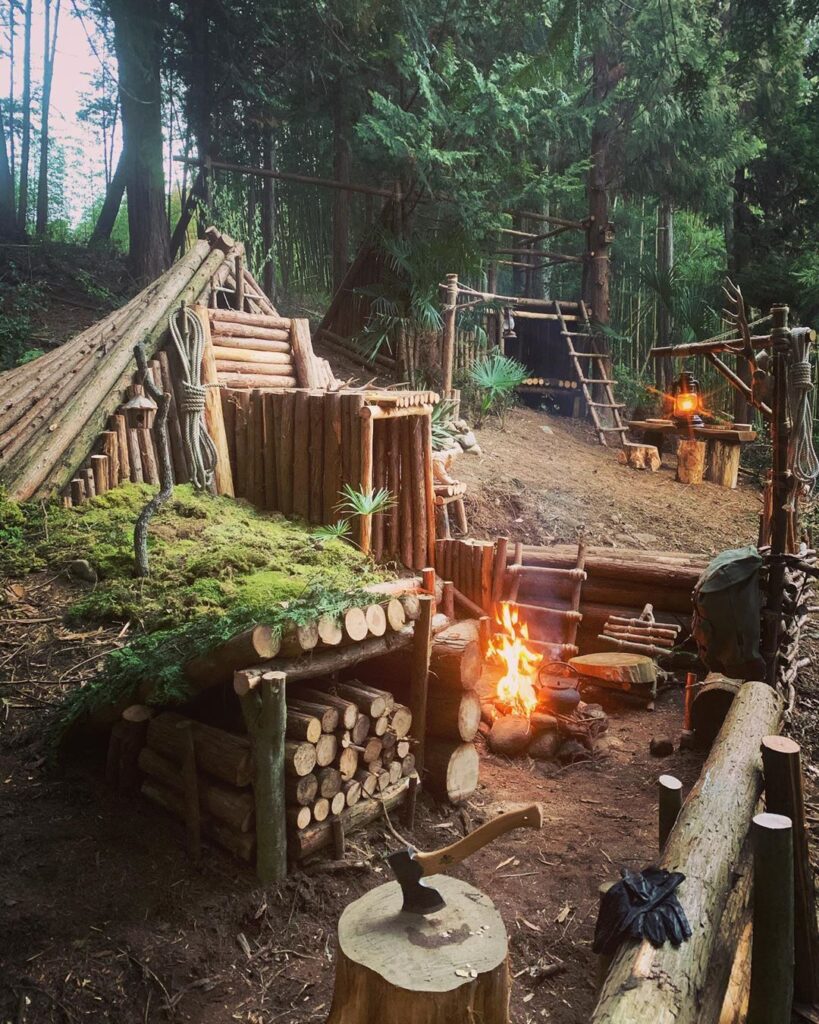Bushcraft, the art of thriving in the great outdoors using primitive skills, has seen a resurgence in recent years. As modern life becomes increasingly fast-paced and technology-driven, many individuals are seeking to reconnect with nature and develop self-reliance skills. In this article, we’ll delve into the world of bushcraft and explore how continuous practice is the key to mastering these essential survival skills.
The Essence of Bushcraft
Understanding Bushcraft
Bushcraft is more than a set of skills; it’s a way of life. Rooted in the wisdom of our ancestors, it encompasses the ability to thrive in the wilderness using only natural resources. From building shelters and starting fires to sourcing food and navigating through dense forests, bushcraft is a holistic approach to self-sufficiency.
1. The Holistic Approach
Understanding bushcraft goes beyond acquiring a set of skills; it’s about embracing a holistic approach to thriving in the wilderness. It involves tapping into the wisdom of our ancestors, learning to coexist with nature, and appreciating the interconnectedness of all living things.
2. Primitive Self-Sufficiency
At its core, bushcraft is a celebration of self-sufficiency using primitive techniques. It encourages individuals to rely on their instincts and the resources provided by the natural environment. From crafting tools to sourcing food, every skill learned contributes to the journey of becoming self-reliant.
3. Environmental Harmony
Bushcraft is a symbiotic dance with the environment. It emphasizes living in harmony with nature, leaving minimal impact on the surroundings. Understanding the delicate balance of ecosystems becomes crucial, ensuring that every action in the wild is a respectful and sustainable one.
4. Shelters and Fires
Part of understanding bushcraft involves mastering the art of building shelters and starting fires. These skills are not just practical; they symbolize the essence of survival and the ability to create comfort and warmth in the heart of the wilderness.
5. Navigating the Wilderness
Navigating through dense forests and unfamiliar terrains is a skill that sets bushcraft apart. It requires an understanding of natural markers, celestial navigation, and the lay of the land. In bushcraft, the journey is as important as the destination.
6. Instincts as Guides
Bushcraft teaches us to trust our instincts. Understanding the subtle cues from nature, whether it’s the changing wind patterns or the behavior of wildlife, becomes a language through which the wilderness communicates. Listening to these instincts is key to mastering the craft.
7. Resourceful Problem-Solving
The essence of bushcraft lies in resourcefulness. Understanding how to adapt and improvise with the materials at hand is a skill honed through continuous practice. It’s about finding solutions to challenges using creativity and ingenuity.
8. Connection with Ancestral Wisdom
To understand bushcraft is to connect with the ancestral wisdom passed down through generations. It involves tapping into age-old techniques and acknowledging the timeless knowledge that has allowed humans to thrive in diverse environments for centuries.
9. Survival Mindset
Beyond tangible skills, understanding bushcraft instills a survival mindset. It’s about facing challenges with resilience, adaptability, and a calm demeanor. The mental aspect of bushcraft is as vital as the physical, shaping individuals into capable and confident outdoor enthusiasts.
10. Harvesting from Nature’s Bounty
Understanding bushcraft includes recognizing the wealth of resources provided by nature. From identifying edible plants to sourcing clean water, bushcraft teaches individuals to sustain themselves by respectfully harvesting from the bounty the wilderness offers.
In delving into the multifaceted realm of bushcraft, each aspect contributes to a comprehensive understanding of this ancient art. Embracing these principles not only equips individuals with survival skills but fosters a profound connection with the natural world.
The Beauty of Simplicity
In a world cluttered with complexities, bushcraft celebrates simplicity. It encourages individuals to rely on their instincts and the resources provided by Mother Nature. As we embrace the simplicity of ancient techniques, we rediscover the profound beauty in living harmoniously with the natural world.
Continuous Practice
Embracing the Learning Curve
Mastering bushcraft is not an overnight endeavor. It’s a journey of continuous learning and adaptation. Just as the forest evolves, so must the bushcrafter. Embracing the learning curve is the first step towards true proficiency.
The Power of Repetition
Repetition is the cornerstone of skill development. Even if it’s tying knots, carving tools, or starting a fire, the more you repeat a skill, the more ingrained it becomes. This repetition builds muscle memory, transforming complex tasks into second nature.
Perseverance in the Wilderness
Bushcraft is not just about physical skills; it’s about mental resilience. The wilderness can be unforgiving, testing one’s patience and resolve. Continuous practice hones not only the physical abilities but also the mental toughness required to navigate and overcome challenges.
Crafting a Connection with Nature
In the process of continuous practice, a deep connection with nature is forged. Each skill learned becomes a thread in the fabric of one’s relationship with the environment. From identifying edible plants to tracking wildlife, every moment spent practicing bushcraft deepens the bond between the practitioner and the natural world.
Adapting to Nature’s Rhythm
Nature has its own rhythm, and bushcraft teaches us to dance to it. Through continuous practice, individuals develop an intuitive understanding of the environment. They learn to read the signs, predict changes in weather, and move seamlessly through the landscape.
The Joy of Resourcefulness
One of the joys of mastering bushcraft is discovering the wealth of resources the wilderness provides. Continuous practice sharpens the ability to identify and use natural materials for various purposes, fostering a sense of resourcefulness that extends beyond the wild.
Conclusion
Developing bushcraft skills through continuous practice is not just about surviving in the wild; it’s about thriving in harmony with nature. As you embark on this journey, remember that each skill acquired is a step toward self-sufficiency and a deeper connection with the natural world. Embrace the learning curve, revel in the joy of resourcefulness, and let the wilderness be your guide. Through continuous practice, you’ll not only master the art of bushcraft but also discover the untamed, resilient spirit within yourself.







